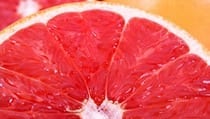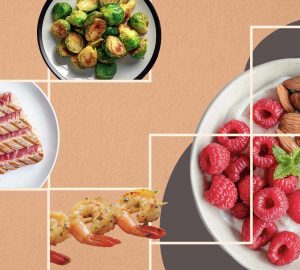No matter how many pills you pop, you won’t get all your nutrient needs from the vitamin aisle (they’re called supplements for a reason). That’s why you should get acquainted with some of the best foods in the supermarket that provide vitamins and minerals in abundance. Some may surprise you. Some may already be part of your daily diet. But no matter what, you’ll be healthier for having these around the kitchen. Your body will thank you later.
Arame
Nutrients: The Vitamin B group, Vitamins A, C, E, and K, Calcium, Iron, Phosphorus, Magnesium, Iodine, and Bioactive compounds
Why You Need It: You’ve no doubt chowed down on nori seaweed if you’ve been to a sushi restaurant (that’s usually what they wrap the stuff in). But arame is its often overlooked younger brother: milder in flavor, with many of the same health benefits, which includes lowering blood pressure, preventing cancer, and improve your immune system, notes Christine Palumbo, RD, contributing editor to Environmental Nutrition.
How to Eat It: If you go to the “ethnic” aisle in your grocery store, you should find arame available in dried sheets. They’re easy to slice into dishes like soups or stir-fry. You can even grind them into a powder with a food processor and use as a seasoning.
Concord Grape Juice
Nutrients: Polyphenols, Vitamin C
Why You Need It: Besides inducing nostalgia for 5th grade lunches, concord grape juice is chockfull of the immune boosting Vitamin C and the antioxidant polyphenol that helps promote blood flow to vital arteries. That not only means your heart health can improve with every 4 oz serving, but there may be some stirring below the belt as well. Something that may take you back to early adolescence even more.
How to Eat It: Just check the juice aisle at your local grocery store and you should find plenty of options.
Kimchi
Nutrients: Vitamin A, Vitamin C, B Complex Vitamins, Calcium, Fiber
Why You Need It: Those familiar with Korean food have likely come across this traditional dish made from fermented cabbages and chili peppers. Some find it a bit on the sour side, but when paired with brown rice and other vegetables, it makes for a savory, delectable dish packed with health-boosting vitamins and compounds. One recent study from a university in South Korea found that people who ate kimchi on a regular basis reduced their cholesterol by over 21%. Not to mention that it’s an excellent low-calorie source of fiber, which helps digestion and protects against colon cancer.
How to Eat It: The main ingredients in kimchi are cabbage, fish sauce, garlic, and Korean chile. You may need to head to the ethnic food aisle in your local grocery store to stock up on the spices. As one of our editors found out, they certainly vary when it comes to heat.
Red Grapefruit
Nutrients: Vitamin C, Potassium, Folate, Calcium, Fiber, Lycopene, Vitamin B6
Why You Need It: The benefits of citrus fruits are no secret, but sometimes red grapefruit gets overlooked in favor of the more popular crowd in the produce section (oranges, nectarines, peaches). In fact, one Israeli study found that feeding patients the equivalent of one grapefruit a day lowered cholesterol. And the red variety was found to be more effective than white in lowering blood triglycerides, a cholesterol type whose elevated levels is a marker of heart disease. It’s a good thing, too, since red grapefruit is sweeter and more palate-friendly than it’s sour sister.
How to Eat It: You know that white pulpy stuff you peel away from grapefruit? Leave it on! Palumbo says that many of the nutrients are contained right there, so you’ll get the full benefits of all the 170 different vitochemicals that researchers have identified in citrus foods.
Olives
Nutrients: Vitamin E, Iron, Copper, Fiber
Why You Need It: While olives (the green or black variety) often get a bad rap for being high in sodium, they’re also a good source of antioxidants like Vitamin E, which can help promote heart health and fight inflammation (olive oil, in fact, made it onto our list of the Top 40 Foods with Superpowers ). Bonus benefit: If you’re on a vegetarian diet, olives can be a decent source of iron (one serving provides about 24.7% of your daily recommended allowance). Just don’t bite into those pits—not good for the teeth.
How to Eat It: Any way you want, basically—right out of the can or sprinkled on salads is a good start.
Oysters
Nutrients: Vitamin D, Vitamin B12, Iron, Zinc, Copper, Manganese, Selenium
Why You Need It: As mentioned in the Big Book of Sex, Oysters hold more zinc than most any other food. And that’s important. Because, as dietician Dave Grotto (author of ) says, “Guys are motivated by mental, physical, and sexual performance—and zinc crosses all those barriers.” It’s a mineral crucial to healthy sperm production, while also helping with immune system functions, digestion, stress levels, energy, and even skin health.
How to Eat It: About six will provide double the recommended daily allowance of 15 mg of zinc. To spice things up a bit, try a few dashes of hot sauce on your raw oysters.








